"We do not just work on our swing all day, and chip and putt around just so we can say we are not neglecting our short game. 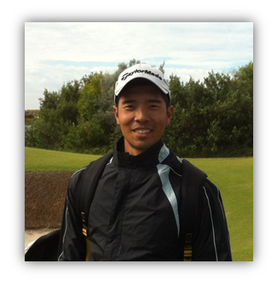 Ian Sim Pro Tour Golf College Student Ian Sim Pro Tour Golf College Student In the blink of an eye, my second semester at PTGC has come to an end. They say time flies when you're having fun, and I couldn't agree more! The best and most important part though, is that I've seen improvements in various aspects of my game from the number of assessments we have done through the two semesters! Before I started out with PTGC in October last year, I knew roughly where my weaknesses were but it wasn't anything concrete, and my training wasn't very well structured or organized. Here at PTGC we have a daily training log where we record down every shot we hit, and together with the comprehensive assessments that we have to go through three times a semester, it allows us to have a much clearer picture of the level that each area of our game is at. Here are some illustrations of my very first assessment (below left) in my first semester, compared to the most recent assessment of my second semester (below right).
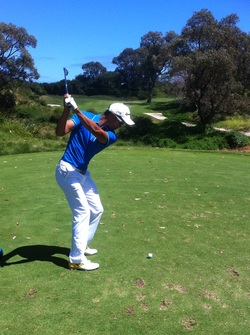 You can see how much clearer it becomes to see where each of my skills are at, and it becomes even clearer when we fill out our daily training log, because the more data we take down, the more accurate the numbers become. As you can see, several of my skills have improved, and I can also have a better understanding of which areas need more work on. Currently my long game is going through some technical work at the moment, which explains for the dip in my results, so that will be one of my top priorities. Apart from that, I really want to push up my 1 - 4m putts to an average of 70%. I hit that number on one of the assessments, but my average tends to be just under 65% at the moment. I would also like to push my approach wedges up to the orange zones. I found training at PTGC to be beneficial for my progress because the program covers everything a professional needs to know or work on. We do not just work on our swing all day, and chip and putt around just so we can say we are not neglecting our short game. On the contrary, because we know exactly what we need to be working on (based on our assessment), we can allocate our timing respectively. Besides the structured approach to training, I found it really useful to have two world class coaches around to overlook our training. 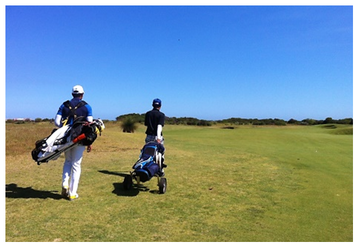 Of course, the program they teach us at PTGC is structured independent training, but I cannot deny that their valuable insights into the various aspects of the game have helped me tremendously in my progress. We have mental psych sessions every Wednesday mornings where we go through a myriad of topics, from Neuro-Linguistic Programming to course strategizing, from self-confidence exercises to going through rules and statistics. Outside of that session, anything else that we are unsure of, we have David and Lawrie close by to ask. Between the two of them, they have amassed so much useful knowledge, strategies, tips and tricks, that practically no stone is left unturned. Now that my second semester is over, we have a two week break before the next one starts. It's time to taper my training down a little and get some rest, but even then I already can't wait for the next semester to start! Ian Sim - Singapore Professional Golfer and Pro Tour Golf College Student 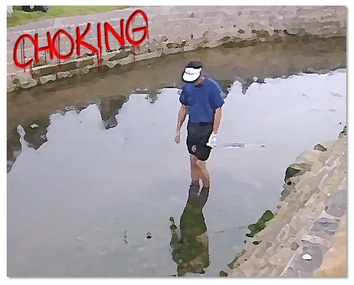 Choking under pressure is a phenomenon that every elite player has experienced but few are willing to explore their personal episodes of choking and analyze the causes of this adverse and costly reaction to perceived pressure. Most players would rather erase such experiences from their mind, and hope it never happens again. But recognizing your patterns of response in terms of thought and action, and understanding what needs to change can mean the difference between being a choking resistant player or a choking susceptible player. In this article, I will share the elite player profiles emerging in recent research on choking susceptibility, that can guide the self-assessment of your player profile to better understand yourself and your typical response under pressure. Choking Defined: CHOKING is define as a critical deterioration in skill execution leading to substandard performance that is caused by an elevation in anxiety levels under pressure at a time when a successful outcome is attainable by the athlete. In contrast, the CLUTCH performance is seen as an increment or superior performance that occurs under pressure circumstances. Familiar Examples of Choking: Many players associate choking with Norman’s devastating finish in the 1996 Masters after going into the final round with 6-shot lead over Faldo. In 2011 at the Masters, Rory McIlroy began the final round with a 4-stroke lead. But he fell apart beginning on the 10th tee, eventually finishing with an 80 to drop to 15th place. His drive on No. 10 wound up between two of Augusta Nationals cabins, a part of the course that might never have been shown on TV before. He triple-bogied that hole, and followed it with a bogey on the 11th and a double on the 12th. 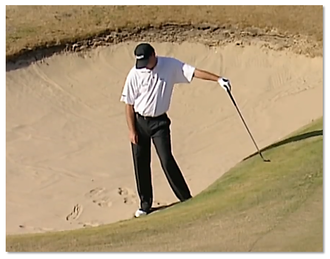 Now let’s take a closer look at what happen’s behind the choking event in terms of common thought patterns and on-course behavioural responses. The published research Dr Gucciardi and I conducted in 2010 examined the individual choking experiences of 30 elite players from Australia and the US. These are the common patterns seen in their responses. Thoughts and Focus
Common Behavioral Responses (Actions):
Are you a Choking Resistant Player or a Choking Susceptible Player? 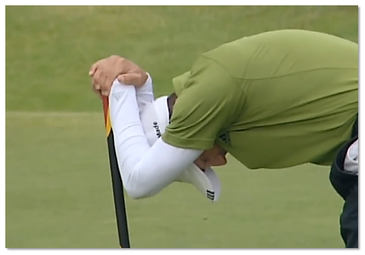 The Profile of a Choking Susceptible Player: The latest research in choking behaviors and cognitions provide insight into the profile of a choking susceptible athlete. The following attributes are related to choking susceptibility. High Trait Anxiety This involves the experience of anxiety not just on the golf course, but also in other daily tasks such as, social gatherings or exams. A Strong Self-Focus A habit of monitoring your thoughts and feelings in most social situations. High Self-Consciousness Excessive worry about what other’s think and how they perceive you. Rigidity and inflexibility in your training and game approach This means you are the type of player who does not cope well with change or adapt easily to unforeseen circumstances. In training, you enjoy repetitive drills in for skill mastery, but dislike practice that forces a new or creative approach. Symptoms of high stress before major competitions This means that deep down your mind and body perceive pressure situations as a threat and you do not find these moments fun or energizing. 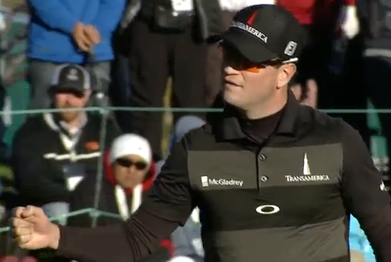 The Profile of the Choking Resistant Player: In contrast, the profile of a choking resistant player is defined by these actions and characteristics: Engagement in Optimistic Self-talk Following a bad hole, choking resistant players consistently remind themselves of positive possibilities. Their self-talk directs their focus on playing “one shot at a time.” Visualization of team support Interestingly, choking resistant players imagine significant others cheering them on when they walk the course, rather than worrying about how other’s perceive them. A Pre-shot Routine that Regulates Arousal Resistant players perform an action in their pre-shot routine that helps to set their focus or calm their nerves. Ask yourself: Do the actions in your routine serve a purpose? A Present Focus Instead of focusing on past mistakes or future failures your mind and body is absorbed in the present shot. Reduced Expectations This involves a healthy perspective and a positive outlook on the importance of your performance in the upcoming tournament. Trusting and Instinctual. This involves a strong sense of trust in your abilities as a player, allowing you to feel natural on the course, and play instinctually. Utilize these profiles to identify areas for improvement in your own player profile, as well as attributes you would like to optimize to enhance your performance under pressure. To further develop your choking resistant mental skills visit a mental notes consultant near you. Dr Jay-Lee Longbottom PhD | Psychologist MAPS Book an appointment to raise your performance under pressure with Jay-Lee at the Singapore Sports Medicine Centre Why You Should Never Make a Golf Swing Change Until You Perform a Benefits to Costs Analysis First15/3/2014
"Many tour players have fallen into the trap of investing time, effort and dollars trying to swing the golf club quite differently compared to their authentic or original style, and they end up playing no better, or sadly a lot worse as a result." 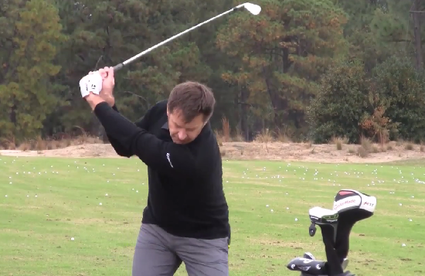 Nick Faldo changed his golf swing style and improved a lot! Nick Faldo changed his golf swing style and improved a lot! What is the real cost of improving your golf swing? In other words, how much does it really cost you to improve your golf swing, so you can keep finding ways to improve; and you really have to ask the question, is it really worth all the effort? You need to seriously weigh up the cost of golf swing improvement against the benefits you think you might gain. Why? It just makes good sense to strive to receive a good return on your investment from the time, effort and money you invest in yourself. I’m sure you would agree. This is a given in the business world where individuals routinely invest in themselves by continuously educating themselves so they can gain better opportunities in the market place, and in golf it should be no different. You spend your time, your effort and your money to get better; it is as simple as that. Think of golf improvement as an investment, and there are good investments and there are bad ones. Your responsibility is to focus on the investments that bring in the best returns for the time, effort and money you invest. So what’s a good investment? A good investment is learning and acquiring any golf skill or activity that greatly enhances your performances on the golf course when it matters most to you. Being able to hit a certain type of shot under pressure, and producing consistently excellent results using the method would be an example of this. What’s a bad investment? A bad investment is any golf skill or activity you learn and acquire that does not improve your performances on the golf course when it really matters most to you. 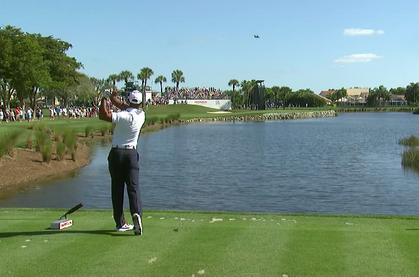 Tiger has probably changed his golf swing style more than any other tour golfer Tiger has probably changed his golf swing style more than any other tour golfer For example, changing your golf swing style to a method that is popular at the moment can be a big mistake. For all those golfers you read about in a golf magazine that made a change to their golf swing and played better, there are many who never see a return on their investment of time, effort and money. Yes golf magazines will always highlight the stars like Nick Faldo, Tiger Woods and Greg Norman who all changed their golf swing styles to some extent and went on to achieve more fame and glory. But what’s interesting about these three examples (and relevant to this article) is that these great golfers all had enormous financial resources behind them when they made changes to their golf swings, and so playing some ordinary golf whilst they were changing their style didn't make much of a dent to their bank accounts. This is especially important when you are going through the transition stage from old golf swing style to new golf swing style and the familiar 'feels' you rely on to play confidently with go missing! This is an important point as you will soon see. Many tour players have fallen into the trap of investing time, effort and dollars trying to swing the golf club quite differently, compared to their authentic or original style, and they end up playing no better, or sadly a lot worse as a result. This would be an example of a bad investment, if after making the changes and competing with them you are no better off than you were before. Weighing Up the Benefits Against the Costs If you are considering a change to your current golf swing style to a popular style of the moment, we think you should at least perform a simple benefits to costs analysis to see whether it is a good investment of your time, effort and dollars, or a bad one. Let’s assume in this example that you are a tour player with a wife and a new baby, and you have been playing on a minor golf tour for 5 years, and for the past 2 years you have kept your card and last season you earned 100,000 dollars. After expenses and taxes your net income was about 70,000 dollars.
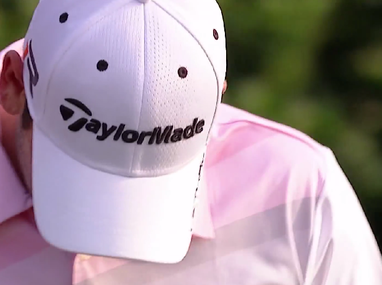 Don't Let Emotion Make the Decision As you weigh it up all you can see is upside and you don’t really consider the consequences of a decision like this. In this mind-set it's hard to see the downside because as soon as you think about the negative consequences you immediately picture yourself winning bigger checks and playing good enough to get onto the major tour, and it feels good. This is a big mistake because the thing to remember is that this should be a business decision first and foremost, and not an emotional one. Emotions will drive you towards making a decision without always weighing up the real cost of the potential investment. Benefits to Cost Analysis So in this situation you need to perform a simple benefits to costs analysis to determine whether this change in instructor and swing style is right for you. Remember that when a tour professional (or prospective tour professional) is weighing up a decision like this, they understand that the benefits are always economic benefits. In other words, you play a lot better and make more money by making the golf stroke changes. Contrast this with what some elite amateurs and professional golfers see as benefits; an improved looking swing style and better ball striking. These two examples of benefits are poles apart. It's the old "golf score versus golf swing" chestnut. Just because a golf swing looks different, and you hit the ball better, doesn’t necessarily mean that you will play better, or make more income. If you undertake changes to your golf swing, it is because you want to experience considerable improvement in your performance on the golf course. That’s obvious, but your score average should be better, and your income greater after taxes and expenses.
So let’s look at it now and work out the real cost of changing golf instructors, and the possible implications of this golf swing change. In formula form here’s the benefit / cost ratio (BCR): By making the golf swing changes what are the annual economic benefits going to be? For every dollar you invest in changing and improving your golf swing technique how many dollars do you get back? Currently the annual realized rate of return on the investment of time, effort and money is 100,000 dollars with expenses of about 30,000 dollars. So your net income is 70,000 dollars. So if you asked the new golf instructor what he conservatively forecasts the annual increased rate of return on the investment to be if you make the change to your golf swing style, based on full commitment to making the changes over 5 years what would it be? We suggest that you sit down with the instructor and fill out the following table to forecast earnings potential as a result of making this golf swing change. If the instructor is not willing to go through this with you because he is more focused on the change to your golf swing and not discussing the potential downside of the changes to your golf swing, then think carefully, and strongly consider your options going forward. There is always downside! A one to one ratio and our tour golfers earnings equal the costs of making the changes. That is, his costs associated with making the changes, as well as normal on tour and off tour expenses equal his benefits (income). He is no better off in a 1:1 scenario as his income is the same as the costs of making the changes. Break even should never be the goal, and if the technique that the instructor is selling you is good enough, then you should expect a better rate of return than this. Remember benefits are economic benefits, or income earned as a result of making the changes. It can only be more or less, and there is a very real cost associated with not playing good enough. Expenses don’t become less just because you are going through changes to your technique, they stay the same or they increase, so if expenses are going to be greater than your income, you have a problem looming. Now our tour golfer considers the consequences carefully because his lifestyle and that of his families is tied in to his current annualized earnings, which covers his living expenses on tour and off tour. And a portion of the 100,000 dollars he earns goes towards his budget for playing the tour the following year. So if his rate of return is 1 to 1 (1:1) then in the first year there is no benefit from making the changes. A ratio of two to one means that his earnings are twice that of his costs. And similarly the ratio can be flipped where expenses are twice that of earnings. 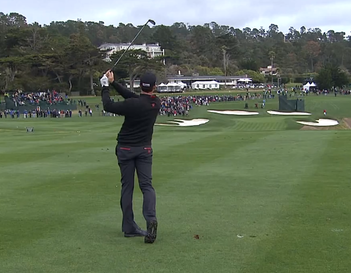 Obviously the goal is to achieve earnings much greater than expenses (otherwise why make the change?) but there would have to be a significant change in his score average, percentage of cuts made and income earned. And this is highly unlikely in year one if he undertakes a major golf swing change. Can our tour golfer afford to play poorly (compared to his current standard) until his changes are habituated and his scores in tournaments improve? Let’s look at the downside for a moment. What if the cost of making the golf swing change greatly outweighs the benefits of making the change, what then? What if it takes a full 2 years for the golfer to start playing better than his current standard? Can he afford to miss more cuts, and make less income in his pursuit of learning and acquiring the new golf swing method? And what if he loses his playing status on tour and now doesn’t have a tour to play on? You can see that there are far reaching affects (positive and negative) if you make the changes, and you should know that for every golfer who plays better as a result of dramatically changing their swing style, there are many who never see the benefits economically, or otherwise. Remember, if you are making the decision based mostly on how you feel about your game (without going through a simple benefits to costs analysis) then you might be heading into some trouble down the road.
"Repeating one type of stroke over and over to the same target can improve your rhythm, tempo and timing during the session, which can influence you to believe that you are getting better at your golf skills because you are hitting lots of good shots in your session...But just be aware of the trap that this type of practice can lead you into." 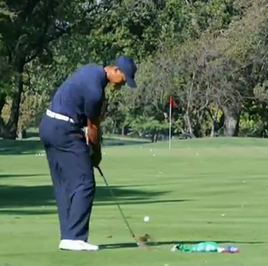 Have you had the experience of enjoying a really good practice session where you were hitting the ball like a champion only to discover that when you got onto the golf course to compete that your game deserted you? Are your golf practice sessions boring and tedious at times? You are not a golfer if you haven’t experienced these aspects of golf practice, and yes it’s true that golf practice can seem monotonous and even boring at times, however by managing the two practice styles I'm going to discuss in this article your golf practice routines will become far more challenging and a lot more enjoyable. Let's start with an important question I want you to answer honestly; "How do you know that you are practicing your golf skills the right way?" Do you favour block style practice or random style practice? You should know the difference between these two main practice styles - especially if your intention is to practice your golf skills to improve, because these different golf practice styles can help you to develop and improve the high pay-off golf skills and transfer them to the golf course faster. 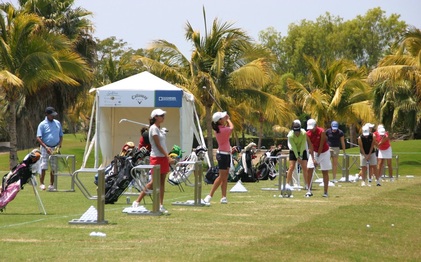 Not all practice leads to improvement so you better know the right style Not all practice leads to improvement so you better know the right style The Illusion of Competence Many of the amateur and professional golfers we have observed over the years lean towards practicing the style of practice known as block practice. Block practice is when you practice a single golf skill over and over to one target (like hitting chip shot after chip shot to one hole) until your practice bag or your range bucket is empty. I think you’ll agree that this type of practice is a very common way for golfers to practice? And here’s what you should know right up front about this common type of practice; block practice style is a lot like rote learning (it's very repetitive) and can lead to “the illusion of competence” where you mistakenly rate your ability when performing a certain skill repetitively much higher than it really is. Repeating one type of stroke over and over to the same target can improve your rhythm, tempo and timing during the session, which can influence you to believe that you are getting better at your golf skills because you are hitting lots of good shots in your session.
 The Value of Block Practice Style Block practice is ideal for performing repetition practice where you might be performing a particular golf drill your instructor wants you to practice, and you need to perform lots of repetitions to develop it and habituate it to the level of unconscious competence. Block practice is extremely important for skill perfection practice, such as when you are perfecting a golf swing habit. The mental challenge level is lower in block practice as you are mainly focused on correct execution of a skill-set. This could be the perfecting of a particular drill where you are focusing on the correct feel of the drill, and using the feedback of a mirror, video or possibly your golf instructor to determine your level of accuracy at performing the skill. If you are hitting golf shots to targets, you would be hitting sets of golf shots to one target at a time with the intention of hitting many shots to reinforce consistent motion. Block practice is very helpful for developing your techniques during the preparation phase in your golf development cycle, but is not nearly as helpful during a golf tournament cycle. For more information on how to plan your development cycles with block and random practice read our article on periodization (here). 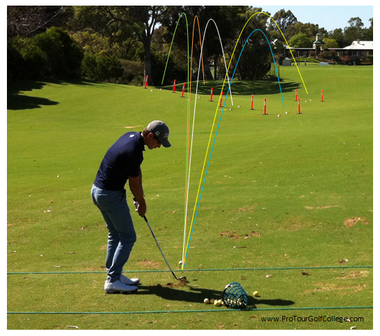 Random approach wedge training keeps your wedge skills sharp Random approach wedge training keeps your wedge skills sharp The Value of Random Practice Style Random practice is quite different from block practice because you are continually varying your practice routines to improve your shot-making adaptability. You do this for example by hitting a set of golf shots to different targets that vary in the length and also in orientation to where you are on the golf range. Random is as it sounds, you continually hit different types of shots to random targets just like you get on a golf course. An example of a random practice routine would be when you hit a 7 iron to one target green, then you might hit a driver to another distance target and then a sand shot to a tight pin and so on. You are practicing adaptability which is the BIG SKILL of high performance golf. Varying your shot-making skills to include a range of shot types from short to long continuously, really helps you to develop and enhance your playing skills and ability. Random practice style is very helpful in the pre-tournament and tournament phases because it gets you out of swing thinking and improvement mode and into shot-making and feel mode. The Random Approach Wedge Routine One of the most helpful practice routines we use at Pro Tour Golf College is a random approach wedge training routine (see image above) where our students hit sets of 10 golf shots to 5 different length targets on the range that range from 20 metres to 90 metres. When our students practice random approach wedge shots they might hit 1 shot to a 45 metre target, then one to a 20 metre target, then another to the 60 metre target and so on until they complete the routine. In a routine like this they might hit 50 shots, but they will keep changing the distance of the shots to constantly keep adjusting their stroke length and feel which teaches them to learn to adapt. Sometimes we'll also add SERIAL STYLE where they hit one shot in succession to a 20 metre target zone, then one to a 25 metre, 30, 35, 40 etc. The Random Long Putting Routine On the putting green when practicing long putt skills our students might hit one putt to a target at 20 metres, then another to a 35 metre target and then a 15 metre target zone and so on until they have completed the allocation of balls within the set that has been programmed for that session. So the key to effective golf practice is to know what development cycle you are in and why. Practicing block style around tournament time isn't helpful for skill transfer as your mind-set can be too much on technique perfection and not enough on targeting adaptability. You would be surprised at how many professional golfers are working on their techniques during a tournament cycle instead of working on it in the pre-season. You need to really think about how you are practicing your golf skills and which style you are favouring by making sure that your practice is influenced by the development cycle you are in currently.
"Becoming a tour player requires a lot more time time and effort than most ambitious golfers are willing to put in. Think about it this way; to consider a life as a tour player ask yourself whether you are willing to devote the next 10 to 20 years of your life pursuing this career choice, with at least 5 hours of practice 6 days out of 7, and playing 54 to 72 holes each week." 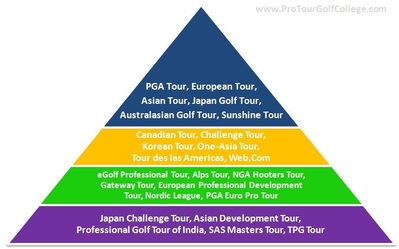 Click on the image to make it larger Click on the image to make it larger One of our students at Pro Tour Golf College was at an amateur tournament recently and overheard some of the young guys around the putting green talking about how they wanted to go to tour school in the next 12 months and "give tour school a try." These guys were all on very low handicaps of scratch or better and want to play golf for a living, which is completely reasonable and understandable, because there are plenty of tours to play on, and lots of dollars on offer, if you are good enough to earn it. And that’s the central point here; if you are good enough. And most of them aren't...yet! The trouble is that for every guy or gal that makes it onto a golf tour and actually earns enough income to keep their card, most will fail over and over. That’s right, most of the golfers that go to tour school will not play good enough to get a card, and those that do, very few of them will last on tour longer than 3 years, and the majority will have to go back to tour school again in 12 months time. So why is there such a high rate of failure in young golfers becoming good enough to play golf on a professional tour successfully? A Questionable Level of Commitment The obvious reason is that they simply aren't good enough to compete at pro tour level. Being a good amateur in most cases translates to a bottom to mid-level tour player. Shooting around par for 4 rounds in amateur tournaments won’t make you a dime in a 4 round pro tournament most of the time. But it's actually more than just the playing standard that is required to be a professional, it's the attitude of "I'm going to give tour school a try" that is more the problem. That doesn't sound very professional does it? You don't give tour school a try; it is a long term career choice - a long term view of where you want to take your game. Short-term thinking in this case is safety thinking, and it really questions someone's true level of commitment. "If I don't qualify for the tour, I'll go get a job." That thinking is a recipe for failure, not just in golf, but also in life. Giving the pro tour a try suggests that you think you have a chance at it, but if it doesn't happen, you'll go do something else. You would be better off taking the second option in our opinion, if this is your thinking, because you won't become a successful professional golfer with that type of attitude. Why? It's simple; no one who has ever made it to the top of professional golf (or is in the process of doing so) has such a low level of commitment to being a great golfer. You should be totally committed to not just qualifying to get onto a pro tour, but also to become A SUCCESSFUL GOLFER ON TOUR. 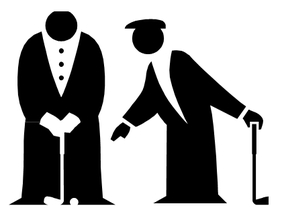 Professional Golfer (Tour Player) or Golf Professional We find that a big part of the problem in our experience starts with the fact that there’s virtually no school or college for educating prospective tour players (apart from ours) where you can learn, develop and acquire the knowledge, attitude and tour grade skills required to become a successful tour player. There are lots of golf swing academies that claim they develop golfers for the pro tour, but very few of them have a holistic curriculum designed for life as a tour player. When you go to the websites of the professional tours like PGA Tour or LPGA Tour to find out how to become a tour player they will give you the ins and outs of rules and procedures for entering the qualifying tournament, but they don't tell you how good you have to be to get onto a tour, and also what skills and attributes you require. There are lots of PGA business schools for learning how to become a golf professional, which is not nearly the same as being a professional golfer. A golf professional is someone who works in the golf industry in a retail position, golf operations, golf management, or is a golf teacher/instructor, (although less and less golfers are going through a PGA business schools to learn how to become a golf teacher today).
Now he is working at several odd jobs to service the debt from his time on tour, and because he lost his playing status on tour he will have to go back to tour school again in 12 months, and go trough the process again to earn a card to play for pay. But my point is that he will not give up on his dream at any cost, because this is his long term plan for his life. He will pay off his debts again, and keep working hard on improving his game so he can not only get back onto a pro tour, and become the successful professional golfer he truly wants to be. He has the all or nothing attitude that will take you a long way in life, whether it's on the golf course, or in fact anywhere else. Preparing to Play On Tour The reality for most young male and female amateur golfers is that they are far from ready to go to tour school. David and I have had many meetings with amateur golfers (and quite often their parents) over the years about whether they should turn professional, and in most instances we suggest that they should stay amateur for longer, until they can consistently score under par in the biggest amateur tournaments. Most of them don’t want to hear this advice however, and many turn pro anyway, and sadly for most of them all they end up with is a lot of heartache from missing cuts and pre-qualifiers, and a bloated credit card. 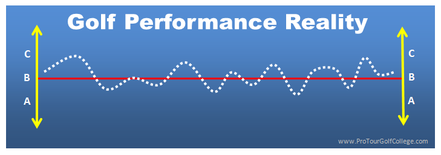 The key is to reduce C game scores and increase A game scores The key is to reduce C game scores and increase A game scores Enter the Sports Psychologist Do you think that really good golfers need a sports psychologist, mental skills coach, or performance specialist if the golfer already has the skills and the game to the level where they are making a great income playing golf on tour? No, the reason these practitioners exist in the main is because their clients don't play well enough (too much C game), or to make enough money when they compete in tournaments. That is not to say that they don't also work with highly successful golfers because they do, its just that they spend more time working with struggling golfers. The constant disappointment and grind of not playing good enough in tournaments wears the struggling golfer down physically and emotionally to the extent that they desperately search for someone to help them to deal more effectively with the ups and downs of life on tour, by teaching them self-management strategies and coping skills. In our opinion sports psychologists ideally should be involved much earlier in your development as a pro tour golfer, when you are preparing your game to pro tour standard, rather than when you have already acquired a huge load of negative mental baggage because you are failing at it. This would make their job so much easier, but most of their consulting work is managing the negative aspects of golf performance rather than the positive aspects. And like most things in life, if it took you a period of time to learn how to struggle on the golf course, then you should expect it to also take a period of time to turn it around, to get your game to a better place, where you are happier with the way you perform on the golf course in tournaments. No one has a magic pill that can take you from Struggle Street to Main Street without a lot of hard work on the right skills and strategies to get you there.  The Crystal Ball If you are an amateur golfer who is considering going to a tour school in the next 12 to 36 months and you had a crystal ball and could see into your future 5 years from now, what would your life look like? Do you see yourself as a competent, confident and successful touring professional who's making a lot of cuts and banking a lot of good sized checks? If you are not seeing this type of future, you really should be. But maybe you are just a little unsure, you like the idea of being a successful professional golfer but you honestly don't know how to go about it. Here's the key question that you need to ask yourself right now (and answer) that is the starting point of getting onto the path to the pro tour: "What are the standards that I must achieve, and what are the specific skills and strategies I need to learn (that I don't currently possess to the level they need to be) that will give me the best opportunity to not only earn my tour card when I go to tour school in _____ (months), but will also ensure that when I get onto a pro tour that I can play well enough to stay there?" 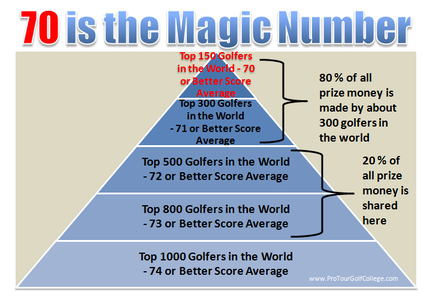 Click on the image to make it larger Click on the image to make it larger There's No Mystery, Just Follow the Trail There's no mystery as to why some professional golfers play better than others over a season. Successful professional golfers leave a trail of results behind them, just the same way as less than successful golfers. This trail helps you to understand what is required to produce lower golf score averages so you can make more cuts and larger checks. So well before you decide to go to tour school you need to get your preparation in order by amongst other things studying the results of successful professional golfers carefully to understand what is required to succeed on tour. Fortunately golf being a game of numbers means that there is plenty of statistics that you can study that will help you to design relevant and appropriate practice plans that can guide your development safely. There's nothing we like more than to see a young golfer with ambition who wants to pursue their goal of playing successfully on a professional golf tour. What we see all too often though is an ambitious golfer with a very poor plan (and often no plan) that leads to higher score averages that makes it impossible to become a successful professional golfer. So don't let this be you.
|
Archives
June 2019
|
Proudly Supported By
Copyright © 2011 - 2018 Pro Tour Golf College
Website Managed By Golf Performance Media
All Rights Reserved
Website Managed By Golf Performance Media
All Rights Reserved

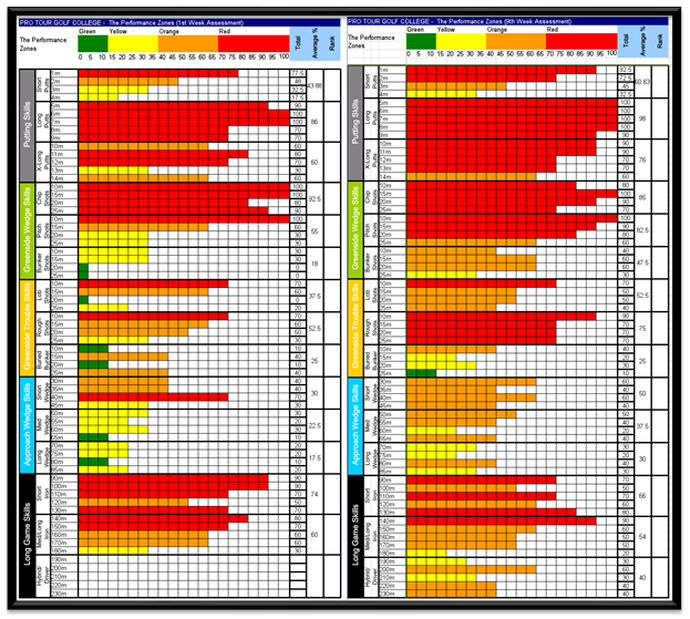

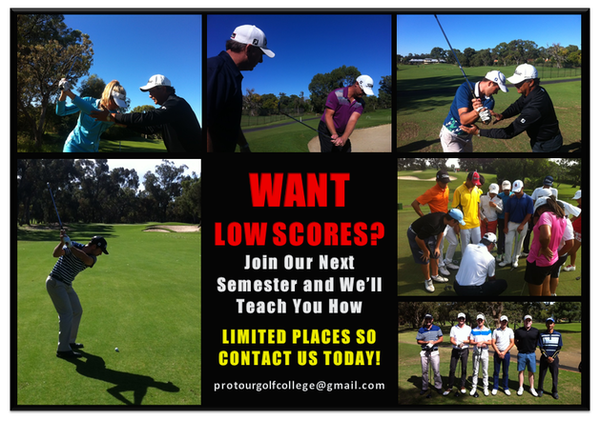
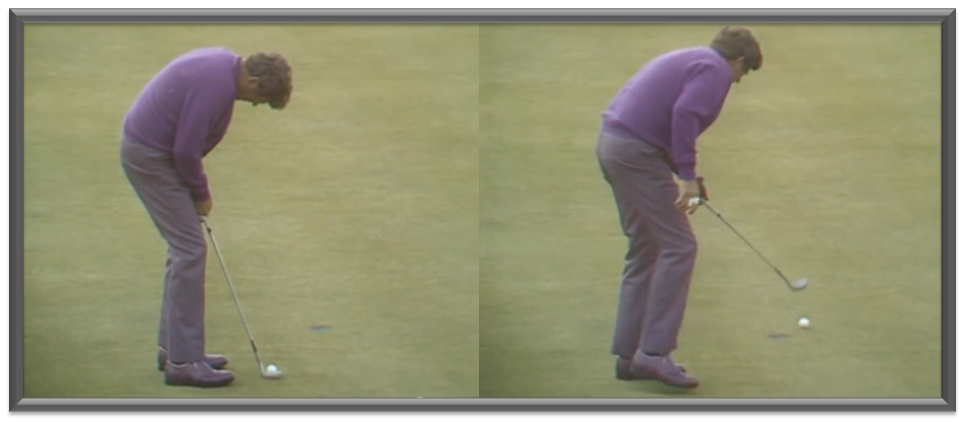



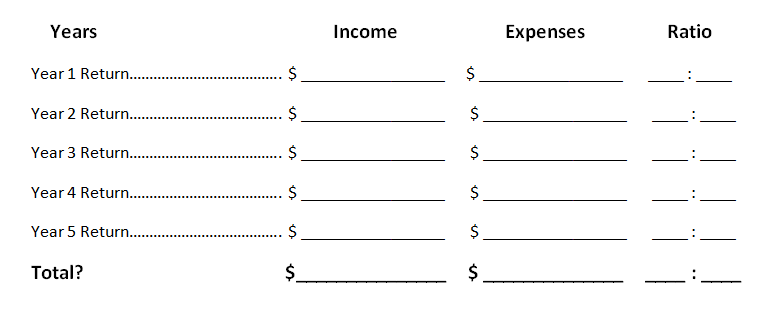


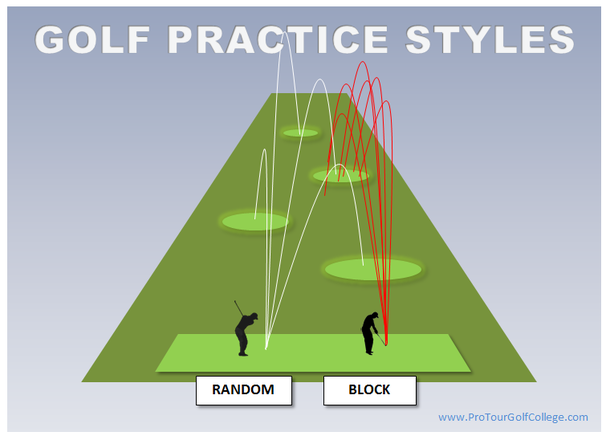
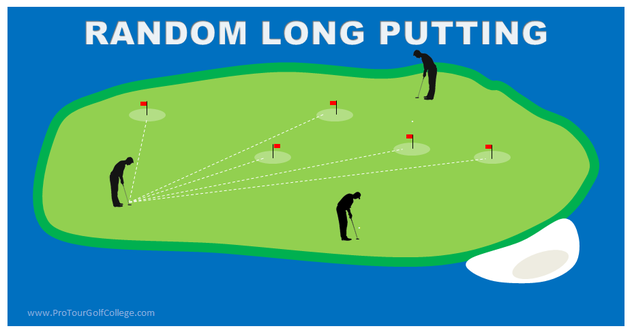


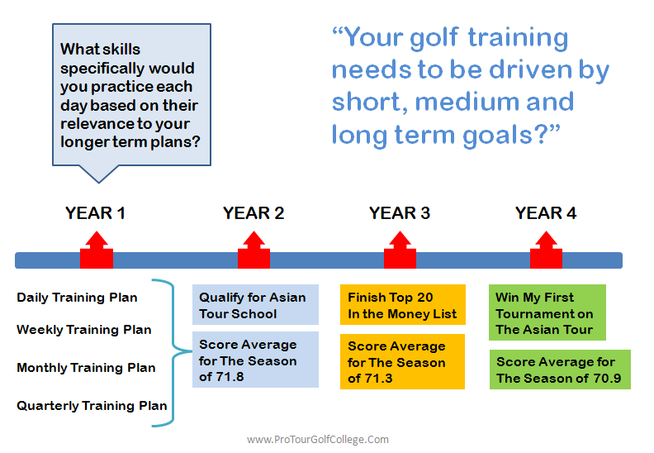

 RSS Feed
RSS Feed



